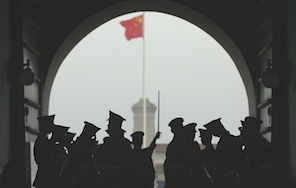Like many emerging markets, its growth is currently coming at the ends, if not the middle, of the Scotch category ladder. Diageo reports that in the last six months of 2013, Johnnie Walker’s super premium brands delivered double-digit growth and value brand White & Black trebled in size. These gains offset weakness from Johnnie Walker Red and J&B in the standard sector and Buchanan’s 12 in the premium sector. Pernod Ricard’s latest quarter showed slight sales decline in Mexico “in a market that is less dynamic than in 2012/13”.
Where we are with Brazil, South America’s number one Scotch market, is anybody’s guess. The country was once a solid BRIC nation, but its GDP was at near recessionary levels in 2012 (0.9%) and only grew to a modest 2.3% in 2013. India and China might well blush at their acronymic association.
Scotch consumption in Brazil has correlated dramatically to its waning wealth, with a yo-yoing of -16% in 2012 to +18.5 in 2013, reaching £99m. Here, like much of the world which has an expanding middle class, a ladder of brands is offered to take consumers to premium enlightenment.
Diageo’s White Horse (up in Brazil 46% by value for the second half of 2013) recruits, while Old Par (up 50% in the market) marches consumers all
the way to Johnny Walker, in theory at least.
Pernod Ricard’s Passport, a standard segment brand of 1.3 million cases, also has a knack for taking consumers on a journey in its key markets of Brazil, Mexico, India and Russia. “We see Passport very much as a key brand that provides a strong entry point to our comprehensive portfolio,” says Nikki Burgess, international brand director for standard blends at Chivas Brothers.
In Venezuela, South America’s second largest Scotch market by volume and value, sales have bungeed from the sublime to the ridiculous over the past few years.
Diageo’s Buchanan’s and Old Parr and Pernod Ricard’s Something Special must be holding on to their hats – last year was the downward plunge of 34%, following a hoist of 23% in 2012.
Late president Hugo Chavez’s successor, Nicolás Maduro, a former bus driver and deeply unpopular figure among Venezuela’s business classes, has driven the country into economic turmoil.
The country’s currency devaluations have collapsed profits of businesses operating in the area. Even Diageo saw fit to note the currency translation of the Bolivar in the preamble to its last quarter’s sales.
Pernod’s latest word on the market needs some unpicking. It says its sales have “stabilised” on the basis of “voluntary reduction of imports”. Essentially, companies are pulling back from this £21.5m a year Scotch market.
In Latin America a country’s constitution has an average lifespan of just over 20 years, according to The Economist, so business is always going to be bumpy.
But there are certainly areas for optimism in Latin America – politics aside, people here like Scotch.
Russia and Eastern Europe
Russia does not fall into the top 20 of SWA’s volume and value sales list, yet many producers talk of the country as if it is big business. Just as in Singapore to China, Scotch passes through the Baltic states, such as Latvia, to Russia. The SWA says shipments to Russia were up 7% to £25m and volume was up 31%. In Latvia volumes were up 30% to 18m bottles.
In Russia, Scotch is drunk with cola or on ice, so while single malts and luxury blends are becoming significant business, the vast majority of sales are at the value and standard end. “Russia is a big market,” says John Burke of Dewar’s (which has just been repackaged) and William Lawson, a brand which sells 25%-30% of its volume in Russia. “In the value segment there is White Horse, Black & White, Dewar’s and Bell’s. We are all competing for the consumers that first come into the category. They are switching from domestic spirits or from beer to value Scotch.”




